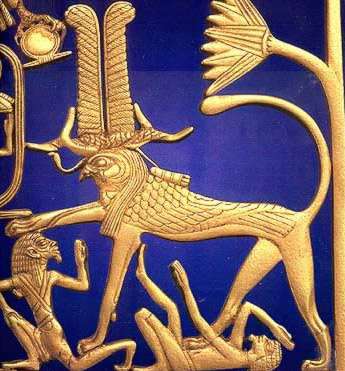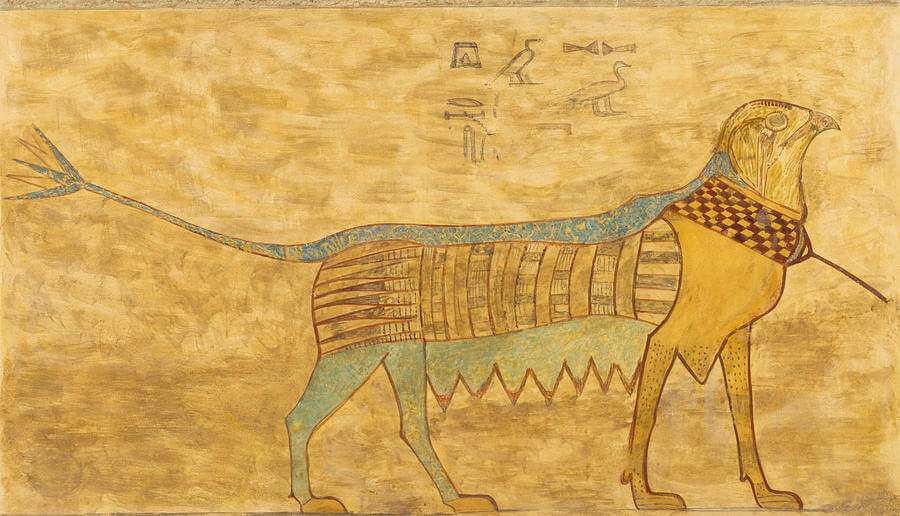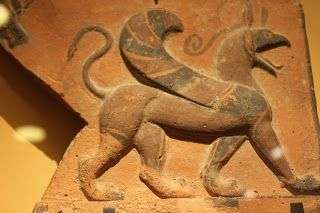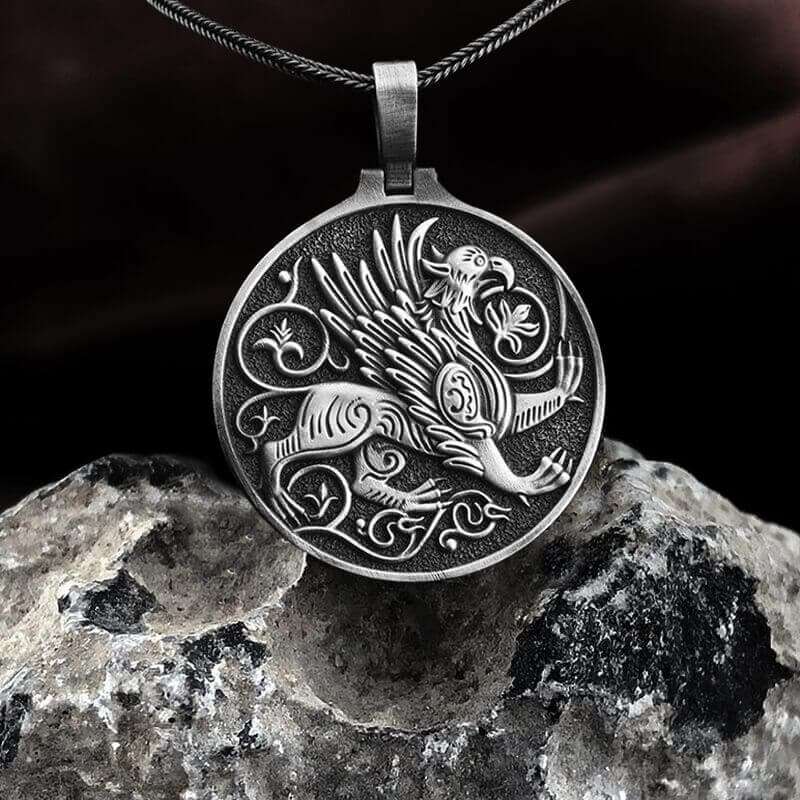The Griffin, a creature of legend and lore, holds a place of profound significance in the tapestry of Egyptian mythology. With the body of a lion and the head of an eagle, it embodies the majestic fusion of two formidable creatures. In the annals of Egyptian culture, the Griffin is more than just a mythical being; it is a symbol of power, protection, and divine connection. In this comprehensive exploration, we delve into the origins, symbolism, and rich history of the Egyptian Griffin. Our aim is to unravel the layers of myth and meaning, offering readers an accurate and insightful journey into the heart of this extraordinary creature’s role in Egyptian civilization.
| Origin | Ancient Egyptian Mythology |
| Classification | Mythical Creature |
| Appearance | Typically depicted as a creature with the body of a lion and the head of an eagle |
| Role | Symbol of protection and guardianship in Egyptian art and architecture |
| Significance | Often seen as a protective deity and a guardian of temples and tombs |
| Mythological Role | Associated with the sun god Ra and protective deities like Aker and Bes |
1. Origins and History
Unearthing the Mythical Roots
The origins of the Griffin in Egyptian mythology trace back to the dawn of civilization along the banks of the Nile. This enigmatic creature first emerged as a symbol of divine power and protection in the ancient Egyptian pantheon. Its earliest appearances can be found etched in hieroglyphics and depicted in the vivid artworks adorning the tombs and temples of the pharaohs.

Guardian of the Pharaohs
In these ancient texts and artworks, the Griffin was often portrayed as a guardian figure, fiercely defending the sacred tombs and treasures of the pharaohs. Its lion-like body represented courage and strength, while its eagle head signified keen vision and a connection to the heavens. This combination made the Griffin a formidable protector in the eyes of the ancient Egyptians.
Evolution of Symbolism
Over time, the symbolism of the Griffin evolved alongside the changing tides of Egyptian culture. As dynasties rose and fell, so too did the role of the Griffin. It adapted to new beliefs and ideologies, remaining a steadfast emblem of royal authority and celestial guidance. Its image adorned royal regalia, offering a divine blessing to pharaohs and their reigns.
2. Physical Characteristics
The Enigmatic Form of the Egyptian Griffin
The Griffin, a creature steeped in Egyptian myth, boasts a striking and unique set of physical attributes that have captivated imaginations for millennia. At its core, the Griffin is a masterful fusion of two iconic creatures, blending the formidable body of a lion with the regal head of an eagle.
The Body of a Lion
The lion, known as the king of beasts, forms the foundation of the Griffin’s physique. Its body is a symbol of strength, courage, and royalty. The sinuous muscles and majestic mane of the lion are faithfully recreated in depictions of the Griffin, evoking a sense of awe and reverence.
The Head of an Eagle
Perched atop the lion’s body is the eagle’s head, crowned with a sharp beak and piercing eyes. The eagle, a symbol of keen vision and connection to the heavens, imparts the Griffin with a sense of divinity and celestial authority. This unique combination of features embodies the harmonious duality of earthly power and heavenly insight.

Artistic Revelations
Throughout the annals of Egyptian art, the Griffin’s image can be found woven into the intricate tapestry of their culture. Illustrations, sculptures, and hieroglyphic carvings depict this mythical creature with meticulous detail. These artistic representations not only serve as a testament to the creative prowess of ancient Egyptian artisans but also offer us a window into the reverence with which they held the Griffin.
3. Symbolism and Meaning
Unveiling the Symbolic Tapestry
Within the realm of Egyptian beliefs and mythology, the Griffin unfurls as a symbol of profound significance, laden with layers of symbolism and meaning. Its presence in Egyptian culture transcends mere myth, delving into the realms of strength, protection, and royalty.
Symbol of Strength
The Griffin, with its lion’s body, epitomizes strength in its purest form. It represents the unwavering fortitude that characterized both the natural world and the pharaohs who ruled it. Its presence in Egyptian beliefs reinforced the idea that strength, whether physical or spiritual, was a prized virtue and a source of inspiration.
Guardian of Protection
As a guardian figure, the Griffin assumed a pivotal role in the protection of sacred spaces and treasures. In Egyptian mythology, people believed that the Griffin’s fierce presence would deter any would-be intruders, ensuring the safety of tombs, temples, and the pharaoh’s burial chambers. They strategically placed its image to ward off harm and safeguard the divine.

Emblem of Royalty
The Griffin’s association with royalty was deeply entrenched in Egyptian culture. It graced the regalia of pharaohs, adorning their crowns and scepters as a symbol of their divine right to rule. This connection elevated the Griffin to a symbol of royalty, underscoring the perceived link between the pharaohs and the divine.
Rituals and Ceremonies
The Griffin’s significance extended to rituals and ceremonies in ancient Egypt. It was invoked during coronation ceremonies, where pharaohs donned garments and regalia adorned with Griffin imagery. The belief was that by doing so, they would channel the creature’s strength and protection, solidifying their rule.
4. Mythological Stories
Myth and Mystery: Tales of the Griffin
Egyptian mythology weaves a tapestry of captivating stories and legends, many of which feature the Griffin as a central character. These tales offer a glimpse into the creature’s interactions with gods, heroes, and other mythical beings, shedding light on its profound role in Egyptian culture.
The Divine Encounter
In one of the most revered myths, the Griffin is said to have crossed paths with the mighty god Ra, the sun deity. This encounter is depicted as a moment of divine recognition, with Ra acknowledging the Griffin’s role as a protector of sacred realms. The story symbolizes the harmony between celestial forces and earthly guardians.
The Heroic Quest
Another popular narrative recounts the journey of a heroic figure who sought the Griffin’s favor to embark on a perilous quest. The Griffin, impressed by the hero’s courage and virtue, provided guidance and protection throughout the quest. This story underscores the Griffin’s role as a symbol of strength and aid in times of need.
Reflection of Cultural Values
These mythological stories not only entertain but also serve as mirrors reflecting Egyptian cultural values and beliefs. They highlight the reverence for strength, the belief in divine protection, and the idea that courage in the face of adversity is rewarded. The Griffin embodies these ideals, making it a revered and enduring symbol in Egyptian society.

5. Cultural Significance
An Enduring Icon: The Griffin in Egyptian Culture
Beyond the realms of mythology and legends, the Griffin has left an indelible mark on Egyptian culture, permeating various aspects of society and artistry. Its enduring significance can be witnessed in architecture, jewelry, and an ongoing source of inspiration for modern Egyptian art and design.
Architectural Marvels
The Griffin’s regal presence extends to the grand architectural wonders of ancient Egypt. Temples, palaces, and tombs bore intricate carvings and sculptures of the Griffin as symbols of protection and divine blessings. These structures stood as testaments to the belief that the Griffin’s watchful eye safeguarded these sacred spaces.
Adornments of Elegance
In the realm of jewelry and personal adornments, the Griffin found its way into the hearts of Egyptians. Amulets, rings, and pendants featuring the Griffin were not merely ornaments but also talismans believed to bring strength and protection to the wearer. The Griffin’s image became a cherished motif, passed down through generations.

Inspiring Modern Artistry
The Griffin’s influence transcends the sands of time, as it continues to inspire contemporary Egyptian art and design. Artists and artisans draw upon its iconic features, blending ancient symbolism with modern aesthetics. Whether in paintings, sculptures, or fashion, the Griffin remains a symbol of cultural continuity and artistic innovation.
6. Conclusion:
The Griffin, a majestic fusion of lion and eagle, holds a significant place in Egyptian mythology and culture. This journey through the annals of time has unveiled its origins, physical attributes, and roles as a symbol of strength, protection, and royalty. Mythological stories have illuminated its interactions with gods and heroes, reflecting the cultural values of ancient Egypt. Beyond myths, the Griffin’s presence in architecture, jewelry, and modern art signifies its enduring legacy. It serves as a bridge between the past and present, reminding us of the profound impact of myth on culture. The Griffin’s regal image continues to captivate hearts and minds, a testament to the timeless allure of this mythical creature in the rich tapestry of Egyptian heritage.
